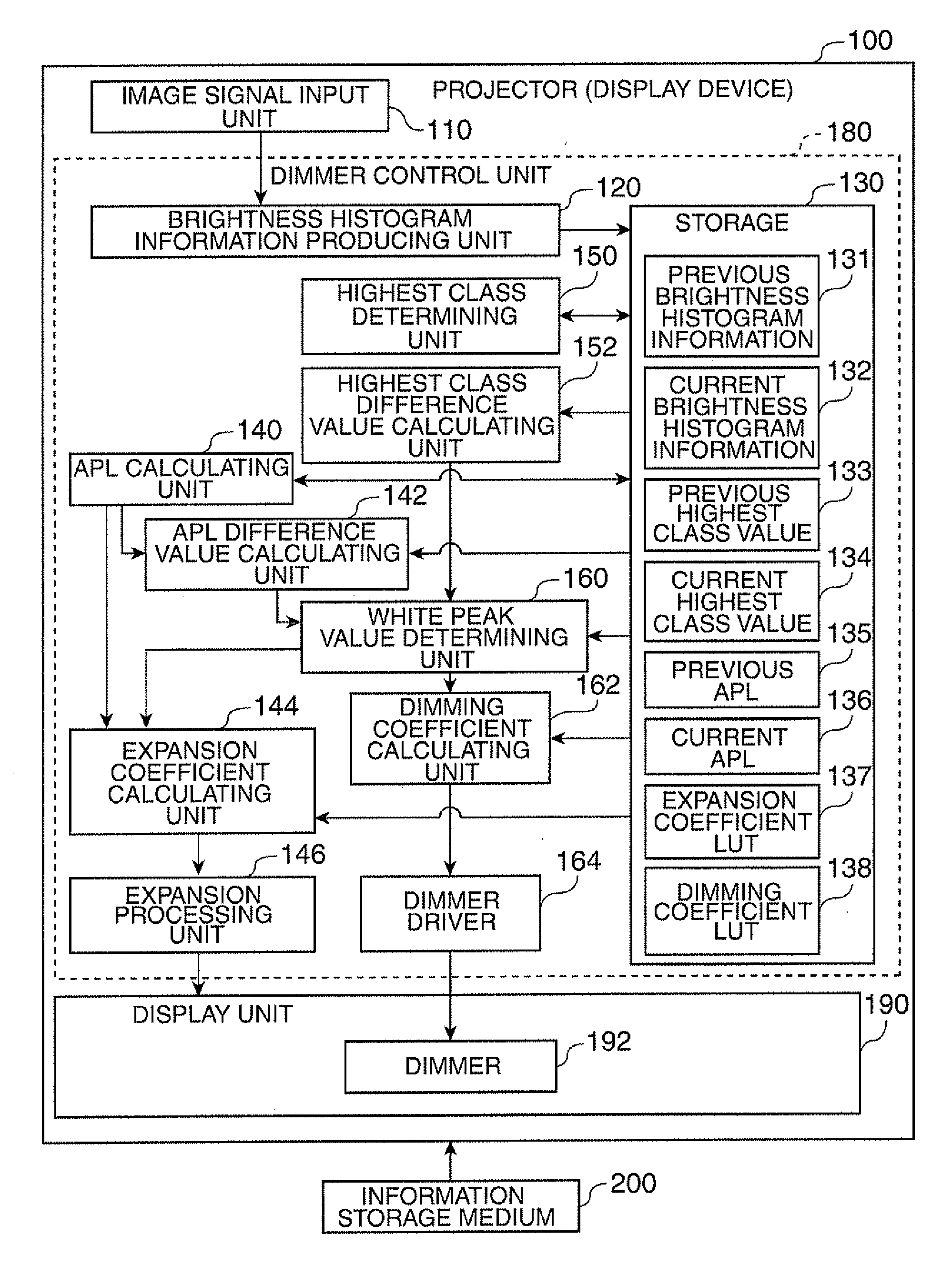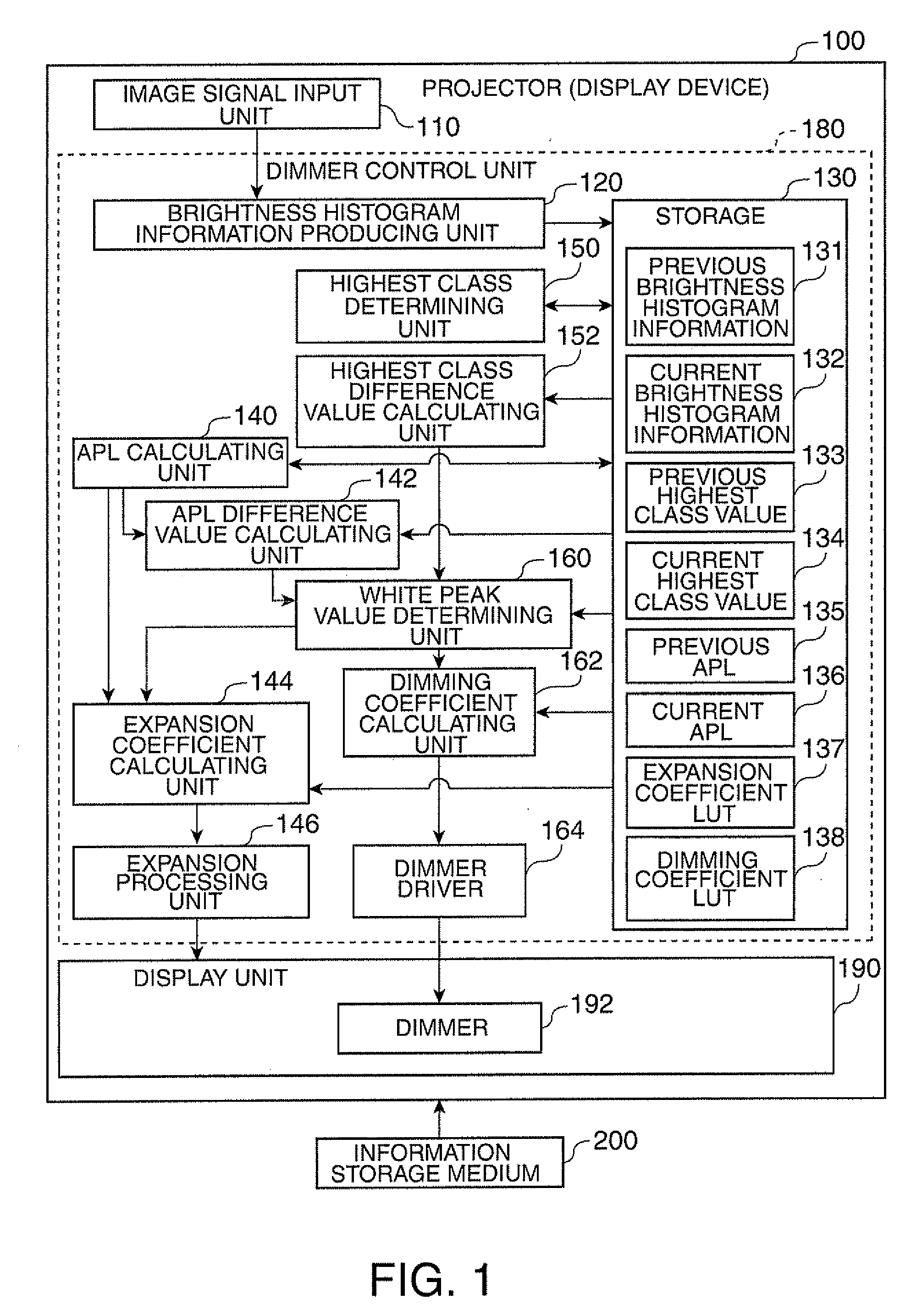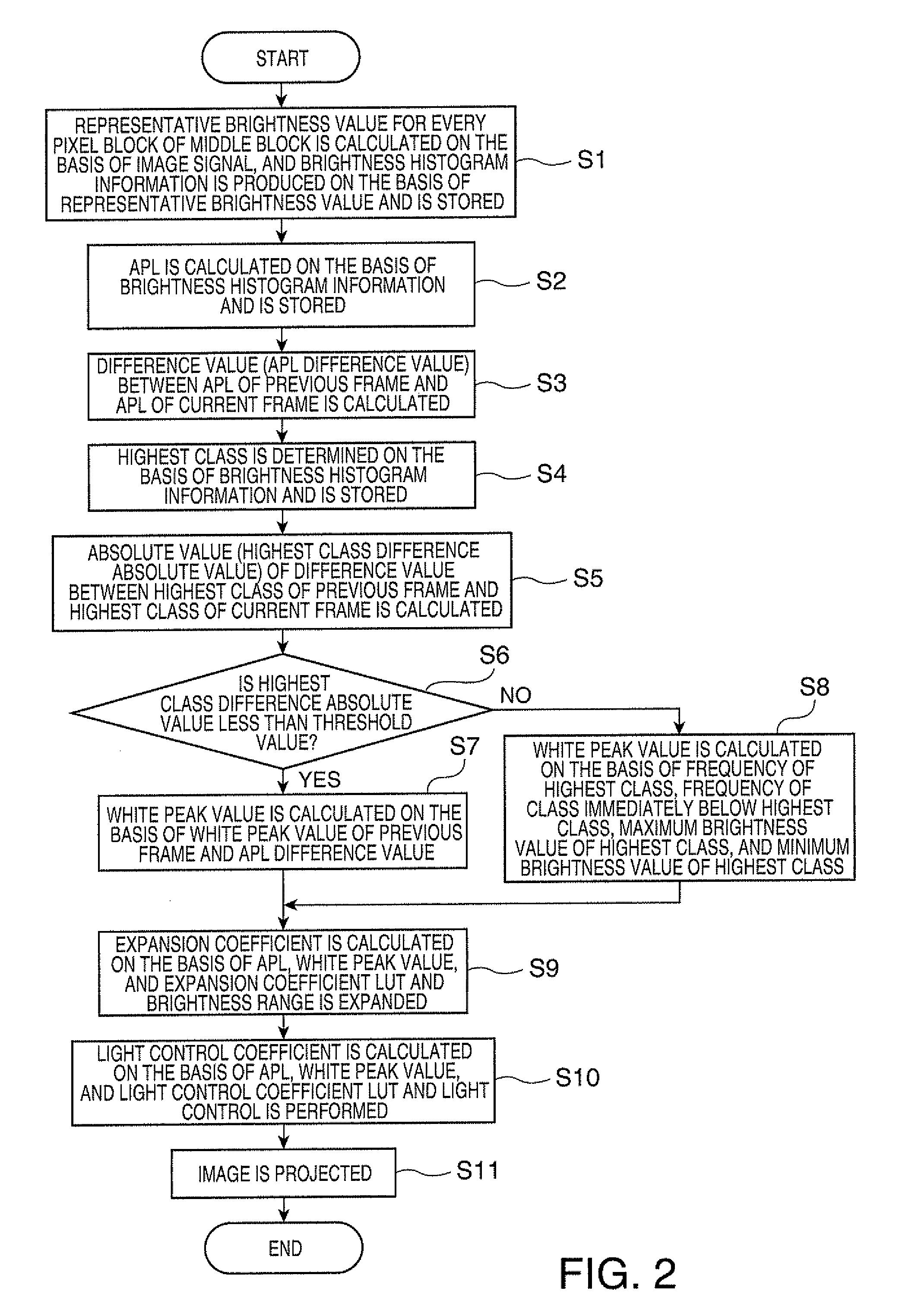Display device, program, and information storage medium
a display device and information storage medium technology, applied in the field of display devices, programs, and information storage media, can solve the problems of halation, reducing accuracy, and reducing the scale of image processing circuits, so as to achieve suppressed halation
- Summary
- Abstract
- Description
- Claims
- Application Information
AI Technical Summary
Benefits of technology
Problems solved by technology
Method used
Image
Examples
first embodiment
[0047]FIG. 1 is a functional block diagram of a projector 100 according to a first embodiment. The projector 100 that is an example of a display device is configured to include an image signal input unit 110 to which an image signal (for example, a moving image signal such as an RGB signal) is input, a dimmer control unit 180, and a display unit 190 having a dimmer 192.
[0048]In addition, the dimmer control unit 180 is configured to include: a brightness histogram information producing unit 120 that produces brightness histogram information indicating a brightness histogram on the basis of an image signal; a storage 130 that stores various kinds of information; an APL calculating unit 140 that calculates an APL (average picture level) on the basis of the brightness histogram information; and an APL difference value calculating unit 142 that calculates a difference value (APL difference value) between a previous APL 135 (APL of a last frame) and a current APL 136 (APL of a current fra...
second embodiment
[0091]Although the projector 100 calculates the white peak value regardless of the highest class difference value or the APL difference value in step S7 of the first embodiment, the white peak value may also be calculated by applying a different value as a according to these values.
[0092]For example, when the highest class difference value is 0 or more and the APL difference value is 0 or more, α=α0. When the highest class difference value is 0 or more and the APL difference value is less than 0, α=α1. When the highest class difference value is less than 0 and the APL difference value is 0 or more, α=0. When the highest class difference value is less than 0 and the APL difference value is less than 0, α=α2. In addition, α0>α1>α2.
[0093]FIG. 8 is a view illustrating an example of the frequency for every class of a brightness histogram in the second embodiment. Here, it is assumed that α0=5, α1=3, and α2=1 and the white peak value WP (t) of a frame s−1 is 863, for example.
[0094]In this...
third embodiment
[0100]Setting of a coefficient based on the highest class difference value and the APL difference value is not limited to the second embodiment, but various modifications thereof may also be made. For example, the projector 100 may set α=α3 when the APL difference value is larger than 0 and the highest class difference value is larger than 0, α=α4 when the APL difference value is larger than 0 and the highest class difference value is 0 or less, α=0 when the APL difference value is 0 or less and the highest class difference value is larger than 0, and α=α5 when the APL difference value is 0 or less and the highest class difference value is 0 or less. In addition, α3>α4>α5. For example, α3=5, α4=3, and α5=1.
[0101]In this case, in the example shown in FIG. 8, white peak values are as follows. In the frame s, α is 5 and the white peak value is 876. In the frame s+1, α is 0 and the white peak value is 876. In the frame s+2, α is 3 and the white peak value is 880. In the frame s+3, α is ...
PUM
 Login to View More
Login to View More Abstract
Description
Claims
Application Information
 Login to View More
Login to View More - R&D
- Intellectual Property
- Life Sciences
- Materials
- Tech Scout
- Unparalleled Data Quality
- Higher Quality Content
- 60% Fewer Hallucinations
Browse by: Latest US Patents, China's latest patents, Technical Efficacy Thesaurus, Application Domain, Technology Topic, Popular Technical Reports.
© 2025 PatSnap. All rights reserved.Legal|Privacy policy|Modern Slavery Act Transparency Statement|Sitemap|About US| Contact US: help@patsnap.com



